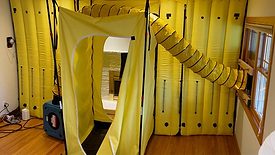Home » indoor air quality
Articles Tagged with ''indoor air quality''
Ductz: The First Female President of the HVAC Restoration & Duct Cleaning Firm
Ask the Expert
August 29, 2022
Stay ahead of the curve with our eNewsletters.
Get the latest industry updates tailored your way.
JOIN TODAY!Copyright ©2024. All Rights Reserved BNP Media.
Design, CMS, Hosting & Web Development :: ePublishing












